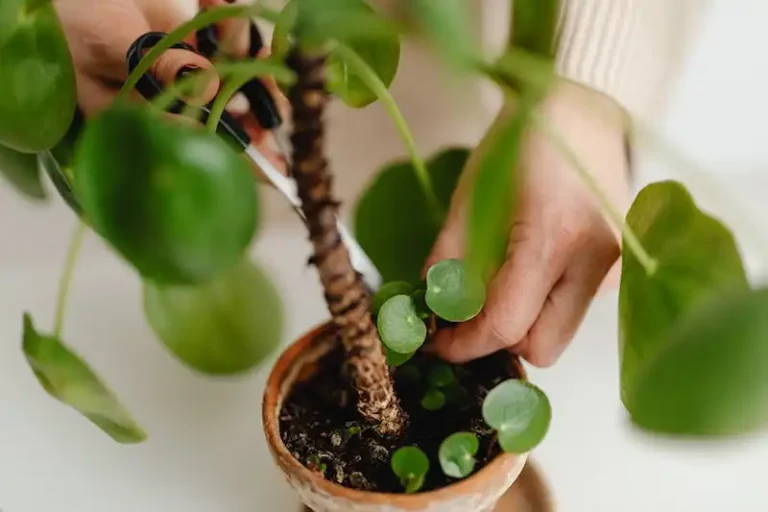Hydrangeas are beautiful, show-stopping plants that can add a splash of color and elegance to any garden or arrangement. With their large, cone-shaped blossoms and lush greenery, it’s no wonder why they are so popular among gardeners. Whether you have them in a pot or in the ground, proper care and attention are necessary to ensure their health and longevity.
First and foremost, it is important to understand the specific requirements of the Hydrangea species you are using. They come in a variety of colors and types, such as the commonly seen white and pink varieties, as well as the more unique blue and purple varieties. Each species has its own preferences when it comes to soil, light, and water, so it’s important to do your research and plan accordingly.
One of the most important aspects of caring for Hydrangeas is watering. These plants require regular moisture, especially during hot summer months. Make sure to water them deeply and frequently, but be careful not to overwater as this can lead to root rot and other fungal problems. Hydrangeas also prefer well-drained soil, so make sure the soil drains well and doesn’t become waterlogged.
In addition to watering, Hydrangeas also require proper feeding. Using an all-purpose fertilizer once a month during the growing season can help provide the necessary nutrients for healthy growth and blooming. Just be sure to follow the package instructions and not overfeed, as this can lead to leafy growth with few blossoms.
When it comes to pruning, Hydrangeas can be quite forgiving. Most varieties can be lightly pruned in late winter or early spring to remove any dead or damaged branches and encourage new growth. However, it’s important to note that some species, such as the Peegee Hydrangea (Hydrangea paniculata), should only be pruned in late winter or early spring, as pruning them in the fall or late summer can remove potential blooms for the following year.
Finally, winterization is an important step to protect your Hydrangeas during the colder months. Depending on the climate you live in, you may need to provide some additional protection to ensure their survival. This can include wrapping the plants in burlap, applying a layer of mulch around the base, or using a product like neem oil to protect against pests and diseases. Be sure to keep an eye out for any changes or problems, and take necessary steps to address them as soon as possible.
Overall, with the right care and attention, Hydrangeas can bring years of beauty and enjoyment to your garden or arrangements. Whether you’re a seasoned gardener or just starting out, these stunning plants are sure to impress with their vibrant blooms and lush green foliage.
How to Grow and Care for Hydrangeas: the Summer Showstoppers Every Gardener Should Plant
Hydrangeas are popular flowering plants that add beauty and charm to any garden. Their large, vibrant blooms come in a variety of colors and can brighten up your outdoor space during the summer months. If you’re a gardener looking to grow and care for hydrangeas, here are some essential tips for success.
Where to Plant Hydrangeas
When selecting a location for your hydrangeas, it’s important to consider their light and soil requirements. Hydrangeas thrive in part-shade to full sun conditions, depending on the variety. They prefer rich, well-draining soil with plenty of organic matter. It’s also a good idea to provide them with some protection from strong winds.
Growing and Caring for Hydrangeas
Hydrangeas are relatively easy to grow, but they do require some care to ensure their health and vitality. Here are some important guidelines to follow:
| Guideline | Description |
|---|---|
| Planting | Dig a hole that is as deep as the root ball and two to three times as wide. Add compost or well-rotted cow manure to the hole and mix it with the surrounding soil. |
| Watering | Hydrangeas require regular watering, especially during dry spells. Keep the soil consistently moist, but not overly saturated. |
| Mulching | Adding a layer of organic mulch around your hydrangeas can help conserve moisture and suppress weed growth. It also provides insulation during cooler weather. |
| Fertilizing | Apply a slow-release fertilizer in the spring to promote healthy foliage growth and flower production. Follow the manufacturer’s instructions for proper application. |
| Pruning | Prune your hydrangeas in late winter or early spring before new growth begins. Remove any dead or damaged wood and thin out overcrowded branches to improve air circulation. |
Hydrangea Varieties
There are several types of hydrangeas to choose from, each with its own unique characteristics. Some popular varieties include:
- Nikko Blue: Known for its vibrant blue flowers.
- Endless Summer: A repeat bloomer that produces flowers on both old and new wood.
- Annabelle: Features large white flowers that fade to green.
- Pinky Winky: Displays two-tone white and pink blooms.
Common Hydrangea Problems
While hydrangeas are generally hardy plants, they can still be susceptible to certain diseases and pests. Here are some common problems to watch out for:
- Powdery Mildew: This fungal disease appears as a white powdery substance on the foliage. It can be treated with fungicides or by improving air circulation around the plant.
- Root Rot: Over-watering or poorly draining soil can lead to root rot, which causes the plant’s roots to decay. Avoid over-watering and provide well-draining soil.
- Frost Damage: Hydrangeas can be damaged by frost in colder climates. Protect them by covering them with a cloth or moving potted plants indoors during cold weather.
By following these guidelines and caring for your hydrangeas properly, you can enjoy their beautiful blooms and vibrant colors throughout the summer and beyond. Happy gardening!
How to Plant Hydrangeas
Hydrangeas are beautiful flowering plants that can add a pop of color to any garden or landscape. Proper planting is essential to ensure their growth and health. Here are some steps to follow when planting hydrangeas:
|
Step 1: Choose the Right Location Hydrangeas thrive in areas with partial shade and well-drained soil. They should be planted in a place where they can receive morning sun and afternoon shade. |
|
Step 2: Prepare the Soil Before planting, make sure the soil is well-prepared. Loosen it and mix in compost or organic matter to improve drainage and fertility. |
|
Step 3: Dig the Hole Dig a hole that is two times wider and just as deep as the plant’s root ball. This will provide enough space for the roots to spread out. |
|
Step 4: Place the Hydrangea Place the hydrangea plant in the hole, making sure that the crown is level with the soil surface. Backfill the hole with soil and gently firm it around the plant. |
|
Step 5: Water and Mulch After planting, water the hydrangea thoroughly and apply a layer of mulch around the base of the plant. This will help conserve moisture and suppress weed growth. |
|
Step 6: Provide Care and Maintenance Hydrangeas require regular care and maintenance to thrive. This includes watering, fertilizing, and pruning. Water the plant frequently, especially during dry spells. Fertilize with a balanced fertilizer specifically formulated for hydrangeas. Prune in late winter or early spring to remove damaged or dead wood. |
|
Step 7: Protect from Harsh Conditions Hydrangeas are susceptible to damage from extreme heat, frost, and cold winds. To protect them from these conditions, consider covering the plants with a layer of frost cloth or placing a wire cage around them. This will help shield them from the elements. |
By following these steps, you can ensure that your hydrangeas are properly planted and well-cared for. With the right care and attention, they will thrive and add beauty to your garden for years to come!
How to Care for Hydrangeas
Caring for hydrangeas is relatively simple, but it’s important to provide the right conditions for these beautiful flowering plants to thrive. Hydrangeas are typically grown in moist, well-drained soil and appreciate a spot with full or part-shade, depending on the variety.
When choosing a spot to plant your hydrangeas, keep in mind that they will appreciate some protection from the hot afternoon sun, especially in warmer climates. Hydrangeas are known for their showstopping blooms, so choosing a high-quality plant from the beginning is essential. Look for garden-grown hydrangeas that have a strong root system and healthy leaves.
Hydrangeas prefer rich, organic soil, so make sure to prepare the planting area by incorporating compost or well-rotted manure. Dig a hole that is wider and slightly deeper than the root ball of the plant. Place the hydrangea in the hole, backfill with soil, and gently firm it in. Water the plant thoroughly after planting to help it establish.
Proper watering is crucial for the health of hydrangeas. During the growing season, make sure to water hydrangeas frequently, especially in hot and dry conditions. However, be careful not to overwater, as this can lead to root rot. Saturating the soil once or twice a week is usually sufficient.
In terms of fertilizing hydrangeas, an all-purpose, balanced fertilizer can be applied in early spring and again in late spring or early summer. Follow the instructions on the fertilizer package for the appropriate dosage. Additionally, some hydrangea varieties, such as H. paniculata, may benefit from the addition of alum to the soil to enhance flower color.
Hydrangeas are generally low-maintenance, but they may require some additional care in colder climates. In late fall or early winter, consider protecting your hydrangeas by applying a layer of burlap around the plant and mulching the base to insulate the roots.
Bacterial diseases can sometimes affect hydrangeas, especially in humid conditions. To prevent this, avoid overhead watering and provide good air circulation around the plants. If you notice any signs of disease, such as black spots on the leaves or wilting, treat the plants with a suitable fungicide.
In conclusion, hydrangeas are beautiful flowering shrubs that can add color and charm to any garden. By providing the proper care, including the right soil, watering regimen, and occasional fertilizing, your hydrangeas will grow and thrive, providing you with gorgeous blooms year after year.


